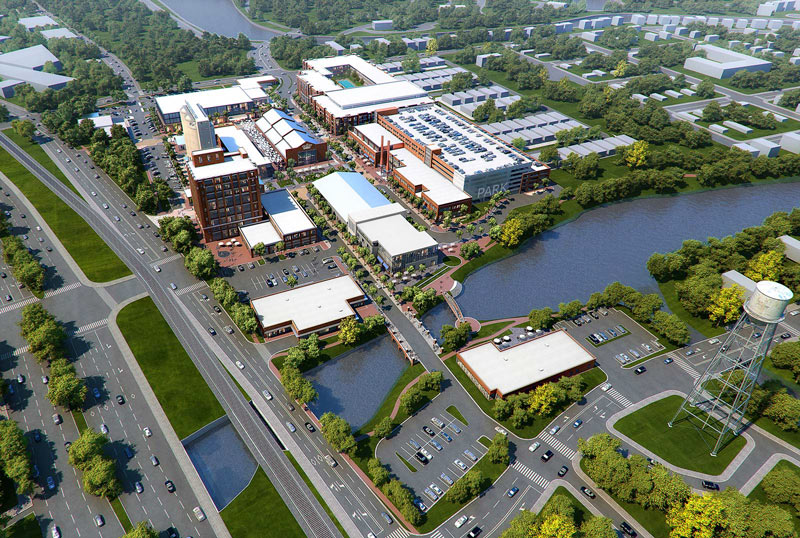
Johnson Development, the company behind that sugar-company-themed master-planned community in Sugar Land, announced yesterday that it has officially handed over the land for the project’s refinery-centric Imperial Market mixed-use district to the folks who will develop it. The 26 acres freshly sold are along Oyster Creek just north of the crossing of Hwy. 90 (visible on the far left of the rendering above, which faces south). That’s Kempner St. running directly alongside the proposed development and crossing the creek as well; a pair of former railroad bridges currently upstream of Kempner are shown replaced with car and pedestrian bridges respectively.
Plans for the development incorporate structures from out-of-use former facilities of the Imperial Sugar Company. The refinery’s silos (instead of becoming an art space) are marked to host a couple of fast-casual restaurants; the 1925 char house, where huge quantities of carefully burned animal bones were once used to whiten and filter cane sugar syrup, will become a boutique hotel. Both structures are more prominently visible in the southeast-facing view below — the boxy brick char house appears to the left of the single-pour-concrete silos:
***
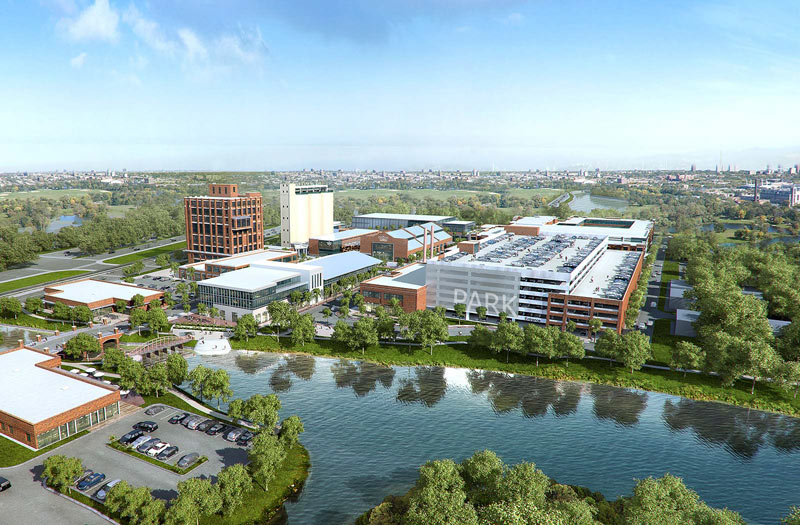
The development looks to include a major parking garage or 2, though those structures aren’t specifically labeled on the current land-use site plan:
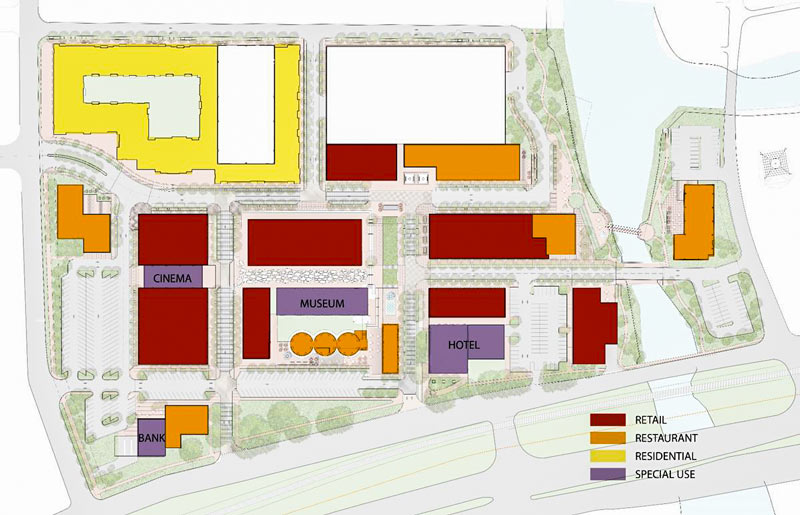
Here’s a look at the purple spot labeled cinema, which (as previously announced) will be an Alamo Drafthouse:Â
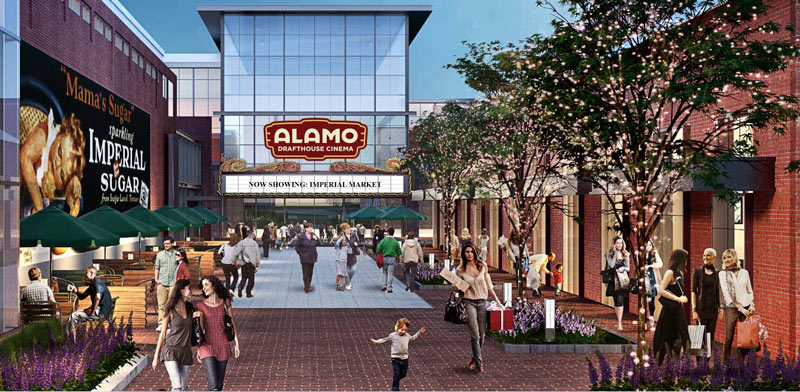
The former refinery’s 2 currently-freestanding smokestacks will be incorporated into a mixed-use office and retail building:
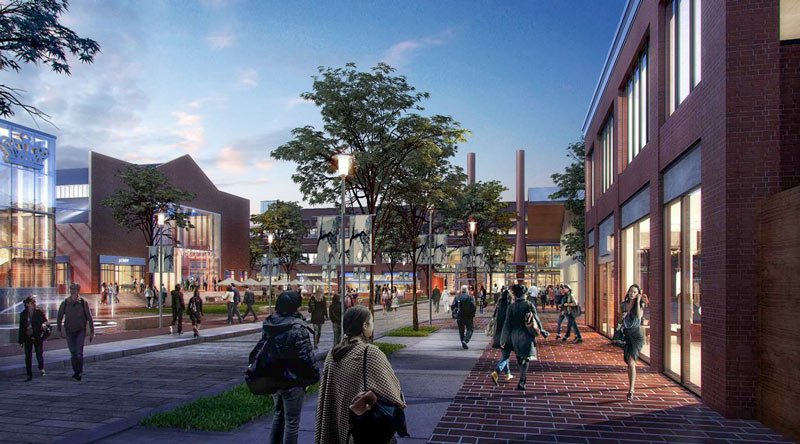
A 274-unit apartment building is also being developed by Sueba:Â
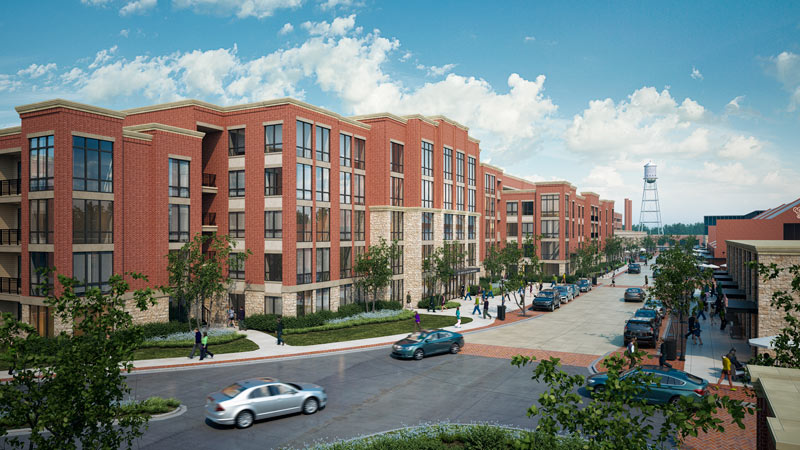
The site will also already hosts a Fort Bend affiliate of the Houston Children’s Museum, which will be joined by the Sugar Land Heritage Foundation. Construction on the rest of the site is planned to start early this fall and wrap up by the end of 2017.Â
- Where History and Commerce Embrace [Imperial Market]
- The 1925 Char House [Sugar Land Heritage Foundation]
- Previously on Swamplot: No Lumps: A Look at Master-Planned Imperial Sugar Land; Sugar Land Scare: Imperial Refinery Buildings Don’t Come Down Easy
Images: Imperial Market





Here’s hoping they’re keeping more than just a couple of those buildings.
.
I’ll never understand how Dallas and Austin can have so many re-used and re-purposed factory and industrial spaces, but in Houston for “some” reason, they all “must” be torn down and a replaced with plywood nonsense that don’t have a tenth of the craftsmanship or longevity.
.
If they do this right, Sugarland might actually be somewhere in the stratosphere of interesting.
Agreed, would even consider venturing out there. The biggest shame is that rain line isn’t commuter.
Blah blah blah…Sugar Land = BFE…bring it haters!
Cryssybee: not sure re-purposing Houston industrial spaces is such a great idea in general. I certainly don’t want to live surrounded by porous surfaces that used to be in close proximity to heavy metals, VOCs, and the like. Not sure if this explains the purportedly disparate treatment you’re talking about.
cryssybee,
.
come on out to the east end, there’s tons of warehouses, and they’re all being converted, rather than torn down. lofts, businesses, breweries.
I agree it would be nice to see the historic buildings re-purposed. What most dont understand; the cost to environmentaly re mediate the old buildings, bring them to code, make them somewhat energy efficient can be extremely costly. If the cost of the development doesn’t pencil out…then you don’t have a development! Moreover, the existing size of structure and placement buildings on the parcel must lends itself to somewhat of an efficient design layout that will attract tenants.
With masterplan communities competing with the likes of Woodlands main street and City Center…..if it doesn’t have something “unique”, be walk able, and have efficiency’s that will attract customers….then it could be a waste of 100’s of millions of dollars.